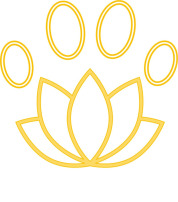
Conscious Canine Dental
Frequently Asked Questions
Q: How do you do it?
A: Your pet's medical history is reviewed and assessed to determine if they are a candidate for the procedure. Small dogs are wrapped in a towel to prevent them from struggling or hurting themselves. Large dogs are gently placed on their sides or back, whatever is more comfortable for them. Your pet's stress levels are monitored and if they are high the dental procedure is halted.
Q: What instruments or tools do you use?
A: A sterile scaler is used to remove all the calculus from the tooth, this includes the buccal, lingual, interproximal and occlusal surfaces of each tooth. Curette scalers are used to remove plaque and calculus from below the gum line. Findings are charted and if necessary we will refer you to your vet for follow up care. After the scaling, the teeth are polished and rinsed with an antibacterial rinse.
Q: Are all your tools sterilized?
A: Yes, all instruments are fully sterilized and a different sterile scaler is used on each pet.
Q: How effective is this method?
A: In general, this method works very well and clients are extremely satisfied with the results. However, the dogs are awake and it may be impossible to remove all tartar. Some circumstances where all calculus may not be able to be removed include deep pockets, root exposure and excessive wiggling of the pet. Keep in mind that a non-anesthetic dental exam and cleaning may not be as thorough as an anesthetic dental exam, cleaning and x-rays, and is just one part of a complete dental plan for your pet.
Q: Besides cleaning, do you perform any other dental procedures like pulling teeth or x-rays?
A: I do not pull teeth nor do I take x-rays, so I can never see what is going on under the gum line. If gum disease is observed or the enamel is compromised an x-ray will be recommended. Smaller dogs may need more frequent x-rays due to crowding.
Q: Is every dog a candidate?
A: No, pets with severe gingivitis, fractured teeth, abscesses, etc. would not be a candidate. Also, dogs with severe anxiety and/or aggressive tendencies would not be a candidate.
Q: How often are cleanings recommended?
A: Most larger breed dogs are ok with cleanings once or twice a year, similar to humans. However, in some circumstances, as is the case with many smaller dog breeds, a maintenance program may be recommended. Even if you are on a maintenance program, it is still recommended to have x-rays on your pets, especially smaller breeds as they are more prone to infection due to crowding.